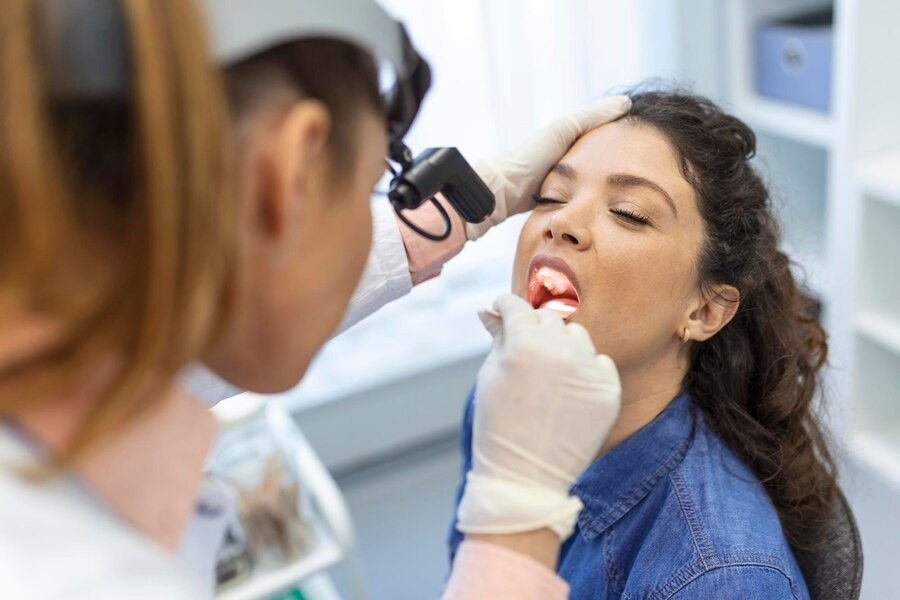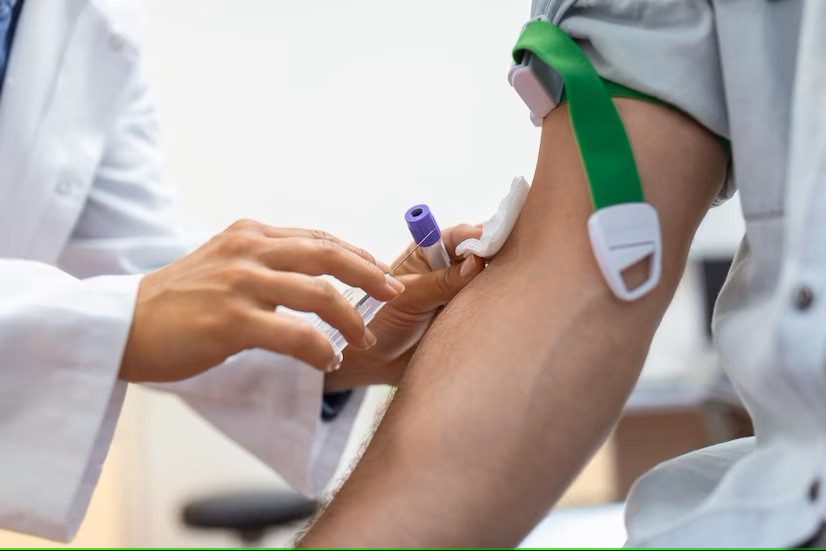Kanker mulut adalah jenis kanker yang berkembang di rongga mulut seperti bibir, gusi, lidah, lapisan dalam pipi, atap mulut, amandel, kelenjar ludah dan di bawah lidah. Kanker mulut juga dikenal dengan istilah kanker rongga mulut.
Kanker mulut sering dikaitkan dengan gaya hidup dan kebiasaan tertentu seperti merokok, mengonsumsi alkohol secara berlebihan dan juga infeksi HPV. Mengenali gejala dan memeriksakan diri dapat menjadi deteksi dini yang sangat penting dalam mengurangi risiko dan keparahan kanker mulut.
Gejala Kanker Mulut
Gejala kanker mulut mungkin mirip seperti gejala kondisi masalah rongga mulut lainnya, di antaranya:
- Benjolan di leher
- Gigi yang longgar
- Pembengkakan dan luka di bibir yang tidak kunjung sembuh
- Kesulitan atau rasa sakit untuk menelan
- Tumbuhnya benjolan di dalam rongga mulut
- Perubahan dalam berbicara
- Perdarahan atau mati rasa di mulut
- Bercak putih atau merah di mulut, lidah atau gusi
- Penurunan berat badan yang tidak disengaja
- Nyeri di telinga
Baca Juga: Pengaruh Negatif Merokok pada Kesehatan Mulut
Cara Mendiagnosis Kanker Mulut
Saat memiliki salah satu atau beberapa dari gejala di atas, sebaiknya segera periksakan diri ke dokter. Dokter atau dokter gigi akan melakukan pemeriksaan fisik rongga mulut, lidah, tenggorokan, pipi, telinga dan mata.
Selain itu, mereka juga akan merekomendasikan serangkaian pemeriksaan di antaranya:
Endoskopi
Endoskopi (upper endoscopy) adalah pemeriksaan yang digunakan untuk melakukan pemeriksaan di rongga mulut. Pemeriksaan ini melibatkan penggunaan tabung fleksibel untuk memeriksa bagian dalam hidung, sinus, laring dan faring guna mendeteksi adanya pertumbuhan sel yang abnormal.
Biopsi
Selama proses endoskopi juga mungkin dilakukan prosedur pengambilan sampel kecil jaringan yang mencurigakan untuk dianalisis di laboratorium. Dari hasil biopsi akan ditentukan jenis sel kanker dan karakteristiknya.
Baca Juga: Cara Pencegahan Kanker Mulut
Sinar-X (Rontgen)
Pemeriksaan sinar-X (rontgen) pada kepala dan leher dapat memberikan gambaran untuk menentukan apakah ada sel kanker yang berkembang di rahang, paru-paru, atau dada.
Pemindaian
Pemindaian seperti PET, CT, dan MRI akan direkomendasikan untuk menentukan lokasi, stadium dan adanya penyebaran sel kanker ke area lain di dalam tubuh.
Perlu dicatat bahwa beberapa orang dengan kanker mulut berhasil disembuhkan sepenuhnya, khususnya dengan deteksi dini. Namun, tingkat kesembuhan dari kanker mulut sangat bergantung pada banyak faktor termasuk stadium kanker, jenis kanker dan respons terhadap pengobatan.
Untuk itu, selalu konsultasikan keluhan dan perencanaan pengobatan Anda karena pengobatan kanker mulut dapat melibatkan pembedahan, radioterapi dan kemoterapi seperti jenis kanker lainnya. Perencanaan dan kerja sama yang baik antara pasien dan dokter dapat berdampak positif bagi kesejahteraan pasien dan membantu mengatasi tantangan selama pengobatan.
Apabila Anda membutuhkan informasi lebih lanjut mengenai kanker mulut atau memiliki pertanyaan lain terkait kanker mulut, Anda bisa memanfaatkan layanan konsultasi kesehatan dengan mengunduh aplikasi Ai Care melalui App Store atau Play Store.
Mau tahu informasi seputar penyakit lainnya? Cek di sini, ya!
- dr. Monica Salim
Mayo Clinic (2022). Mouth cancer. Available from: https://www.mayoclinic.org/diseases-conditions/mouth-cancer/symptoms-causes/syc-20350997
Cancer Council (2023). Mouth Cancer. Available from: https://www.cancer.org.au/cancer-information/types-of-cancer/mouth-cancer
John Hopkins Medicine. Oral Cancer and Tobacco. Available from: https://www.hopkinsmedicine.org/health/conditions-and-diseases/oral-cancer-and-tobacco
Mayo Clinic (2022). Upper endoscopy. Available from: https://www.mayoclinic.org/tests-procedures/endoscopy/about/pac-20395197
Cleveland Clinic (2022). Oral Cancer. Available from: https://my.clevelandclinic.org/health/diseases/11184-oral-cancer









